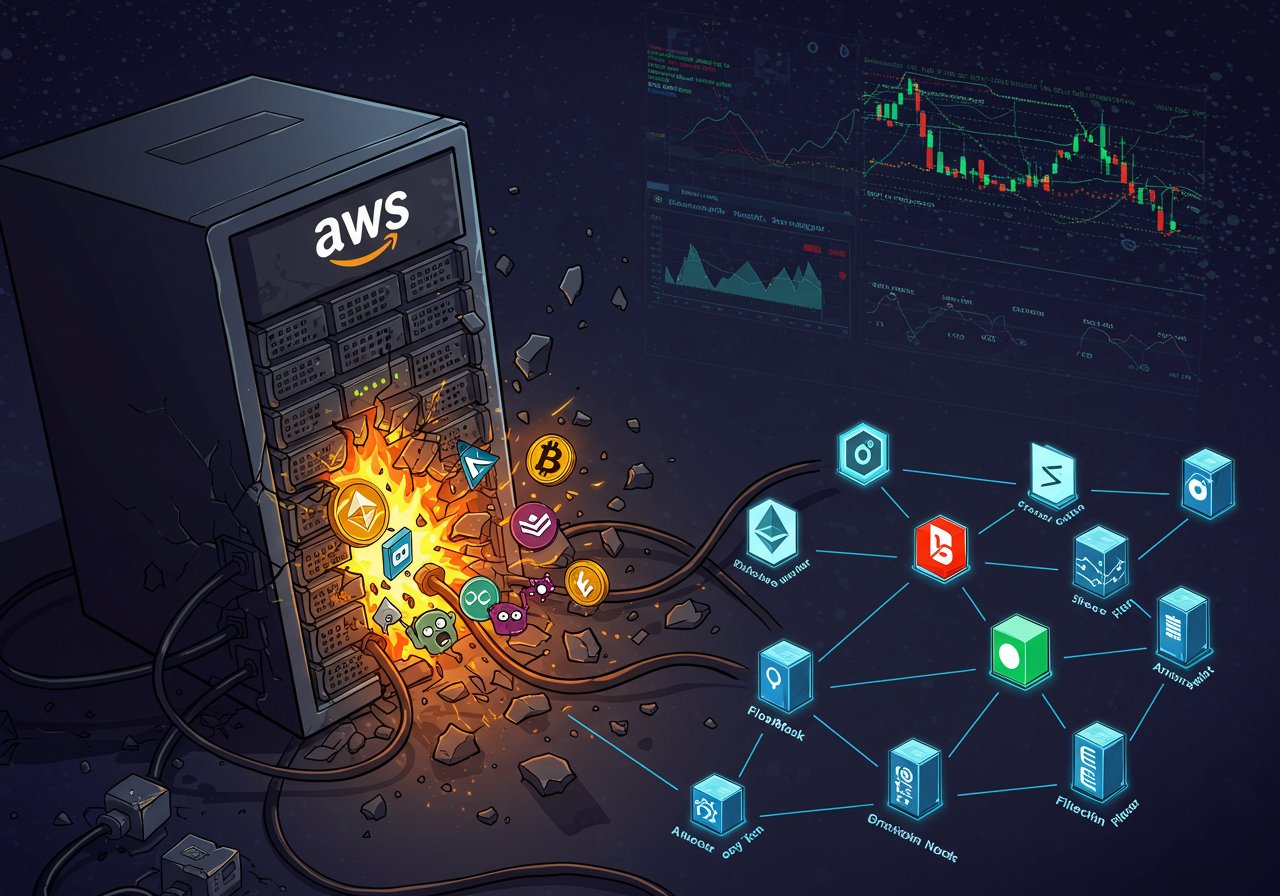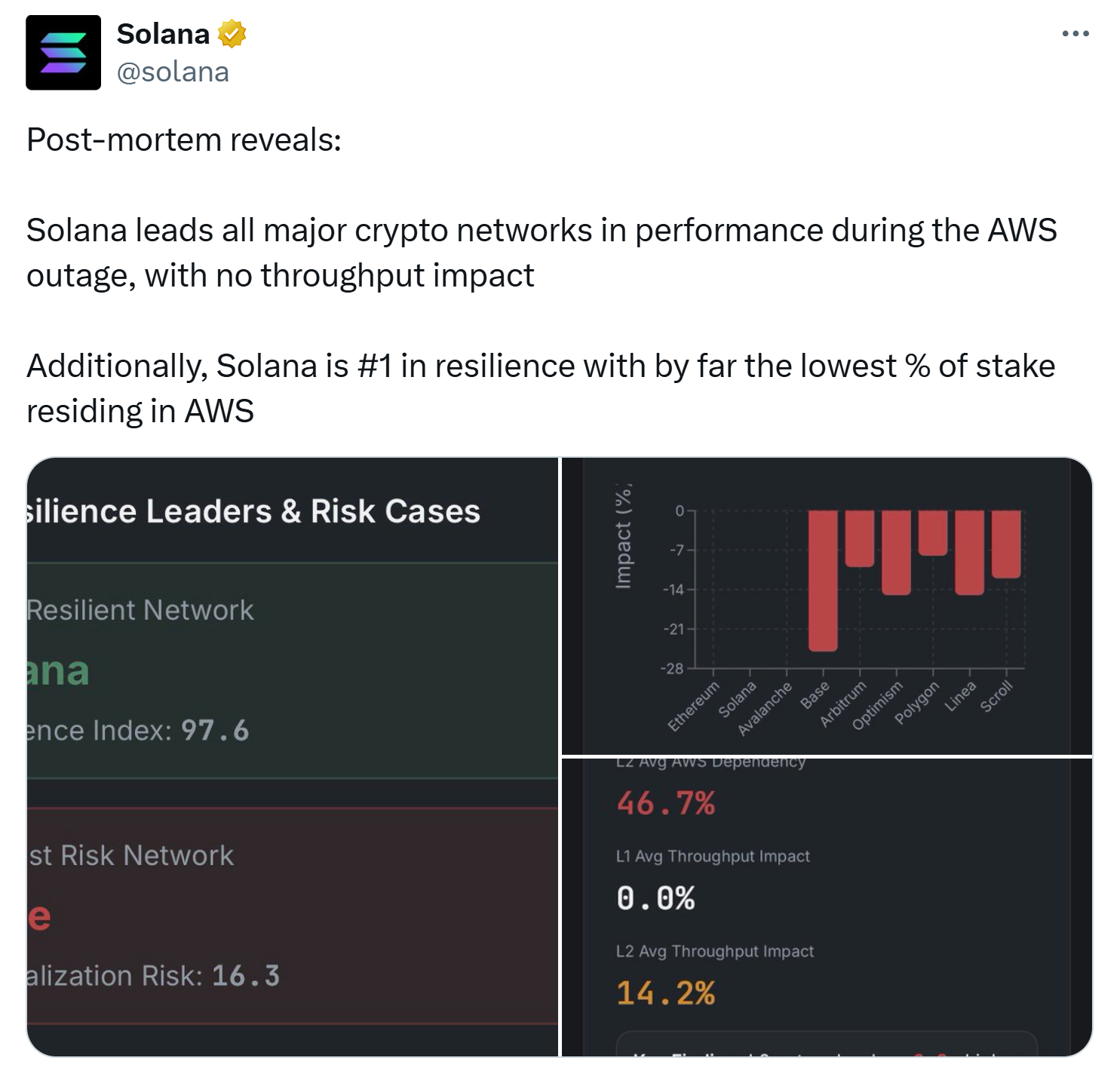
The Cracked Facade: AWS Outage Highlights Crypto’s Centralized Weakness
The recent Amazon Web Services (AWS) outage served as a stark reminder of the infrastructure vulnerabilities lurking beneath the shiny veneer of the crypto world. While blockchains themselves hummed along, unaffected by the disruption, countless users were left stranded, unable to access their funds or interact with decentralized applications. This outage, which impacted major platforms like Coinbase, Robinhood, MetaMask, and Venmo, laid bare a critical reality: true decentralization is still a work in progress.

The Ledger vs. The Door: Where Decentralization Falters
As Jamie Elkaleh, CMO of Bitget Wallet, aptly stated, “Decentralization has succeeded at the ledger layer but not yet at the infrastructure layer.” The core blockchains, the immutable ledgers of transactions, remained functional. However, the interfaces, the wallets, the exchanges – the very tools that allow users to interact with these blockchains – were rendered useless. This is because these services often rely on centralized servers, primarily hosted by giants like AWS, Google Cloud, and Azure. The result was a “jammed door” as Anthurine Xiang, co-founder of EthStorage and QuarkChain, described it; the house (the blockchain) was fine, but users couldn’t get inside.
The Allure and the Risk of Centralized Infrastructure
The reliance on centralized providers stems from practical considerations. These hyperscalers offer scalability, security, and a level of uptime that’s difficult for smaller teams to replicate independently. They also simplify compliance and allow for rapid deployment. However, as Jawad Ashraf, CEO of Vanar Blockchain, pointed out, this has led to a situation where the crypto industry is effectively “running on the same servers.” This concentration creates a single point of failure, magnifying the impact of any outage. As Elkaleh noted, “If one region or provider goes down, hundreds of apps are affected.”
The path forward, according to many experts, lies in a hybrid approach. This involves a strategic blend of centralized and decentralized infrastructure, incorporating elements like decentralized storage (Filecoin, Arweave), community-run nodes, and cloud services. The goal is to create “credible multi-home” infrastructure, diversifying workloads to mitigate the risks associated with single points of failure. This isn’t a quick fix; building truly decentralized systems is inherently more complex and time-consuming than simply deploying on AWS. However, the AWS outage underscored that it’s a critical step in building a resilient and truly decentralized future for Web3.
The recent outage serves as a crucial “wake-up call,” urging the crypto community to prioritize infrastructure resilience. It is not merely enough to have decentralized tokens; the infrastructure supporting those tokens must also be distributed and resistant to single points of failure. The future of Web3 hinges on the ability of builders to embrace hybrid models and invest in decentralized cloud, storage, and compute networks. Ultimately, the recent outage highlights that true decentralization is not just an ideal, but a necessity for the long-term success and stability of the crypto ecosystem.



